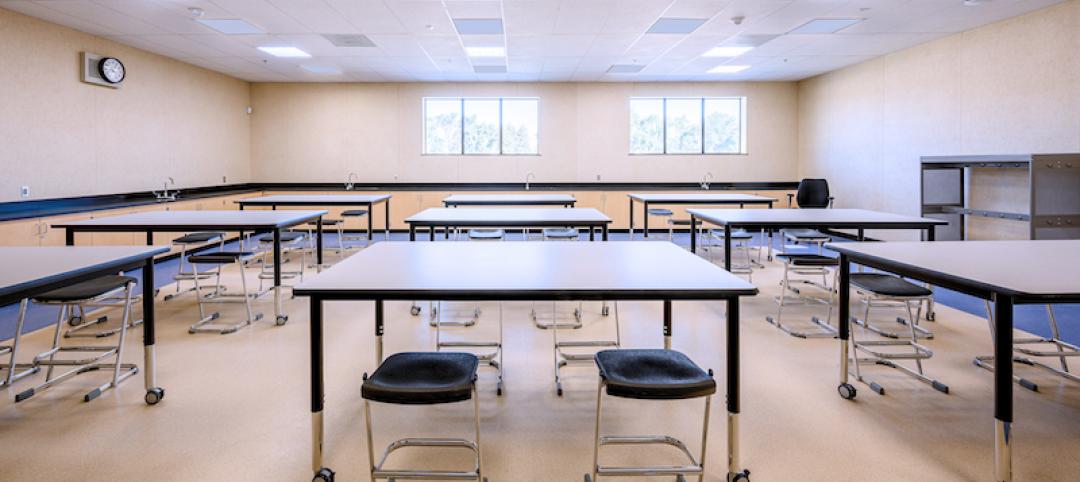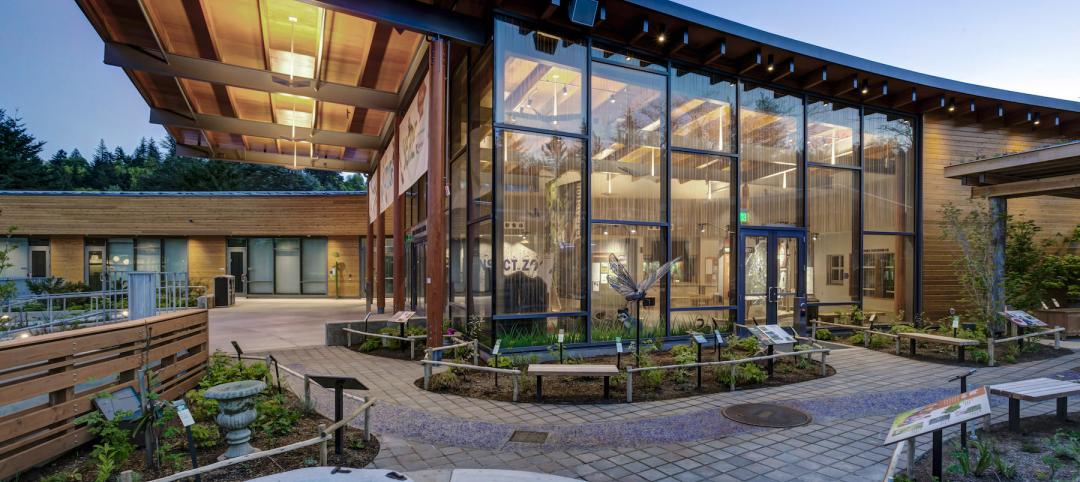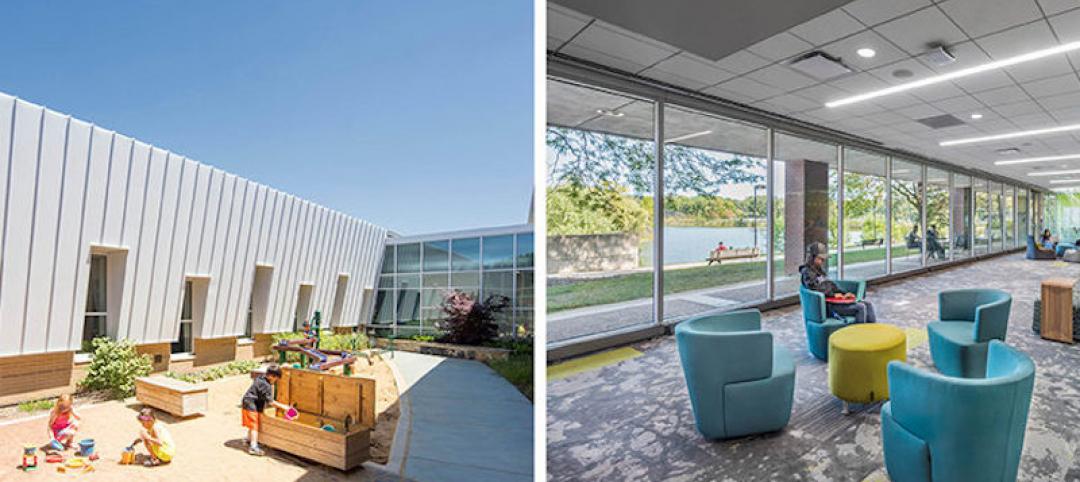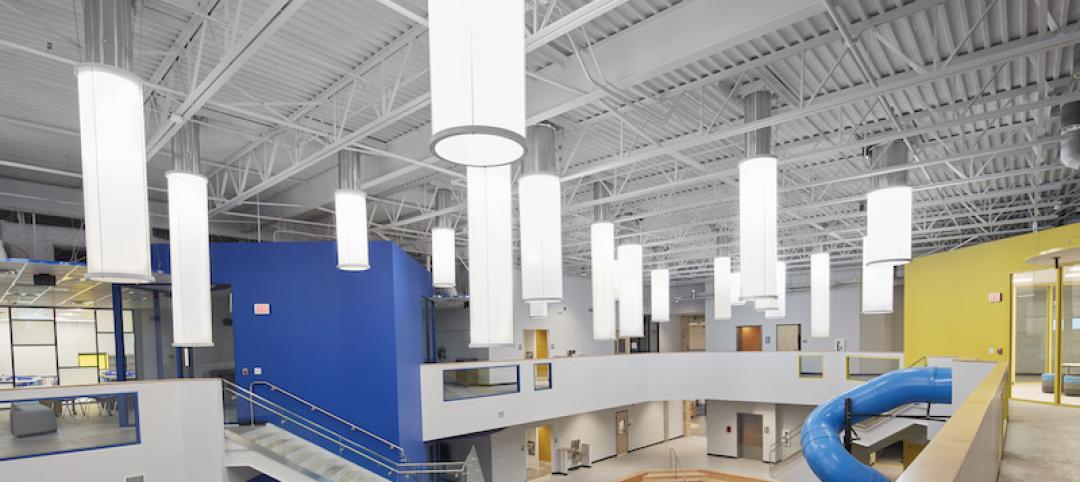To some project teams, “daylighting” means using glass area to admit direct sunlight, period. Yet there are better approaches to illuminating building interiors. Often, the sun’s direct rays are the last thing you need for effective daylighting.
Sunlight comes with high solar heat gain—measured as solar heat gain coefficient (SHGC) for various types of glazing and translucent materials—and can lead to glare, occupant thermal discomfort, and material degradation caused by ultraviolet (UV) light.
Building occupants and owners want useful, uniform light, not high-contrast or high-heat sources, according to surveys like the seminal study led by the University of Washington (https://tinyurl.com/zhpx7h3). That’s why controlled and redirected sunlight almost always provides the best approach, while direct rays may be counted among the least desirable techniques.
Building surfaces and enclosures receiving direct sunlight need solar control systems, including shading devices such as overhangs and fins that may be opaque or translucent, solid or louvered, according to the Best Practices Manual published by the Collaborative for
High Performance Schools. Canopies, window films, and insulated glazing units (IGUs) with internal louvers may also be required. Façades and areas facing north, on the other hand, need ways to maximize daylight harvest.
After reading this article, you should be able to:
+ Discuss the benefits and ideal kinds of daylighting illumination desired for such interiors as workplaces, libraries, and museums.
+ Describe the types of enclosure technologies and wholebuilding design approaches for maximizing beneficial daylighting.
+ List techniques for improving daylighting performance.
+ Compare the methods or materials commonly used in daylighting applications.
TAKE THIS FREE AIA COURSE AT BDCUNIVERSITY.COM
Related Stories
75 Top Building Products | Nov 30, 2022
75 top building products for 2022
Each year, the Building Design+Construction editorial team evaluates the vast universe of new and updated products, materials, and systems for the U.S. building design and construction market. The best-of-the-best products make up our annual 75 Top Products report.
Daylighting | Aug 18, 2022
Lisa Heschong on 'Thermal and Visual Delight in Architecture'
Lisa Heschong, FIES, discusses her books, "Thermal Delight in Architecture" and "Visual Delight in Architecture," with BD+C's Rob Cassidy.
Daylighting | Jul 15, 2022
Tubular system provides daylight for modular school with small windows
Tubular system provides daylight for modular school with small windows.
Sponsored | BD+C University Course | May 3, 2022
For glass openings, how big is too big?
Advances in glazing materials and glass building systems offer a seemingly unlimited horizon for not only glass performance, but also for the size and extent of these light, transparent forms. Both for enclosures and for indoor environments, novel products and assemblies allow for more glass and less opaque structure—often in places that previously limited their use.
Sponsored | Glass and Glazing | Oct 1, 2021
Specifying Responsibly to Save Birds’ Lives
Realizing sustainable, bird-friendly glass design
Sponsored | Glass and Glazing | Oct 1, 2021
Seizing the Daylight with BIPV Glass
Glass has always been an idea generator. Now, it’s also a clean energy generator.
Glass and Glazing | Sep 30, 2021
Plans move forward on Central Place Sydney, duel towers with an AI-driven façade system
SOM and Fender Katsalidis are designing the project.
Daylighting | Apr 6, 2021
Architecture and daylight: Planning strategies for energy-efficient buildings
Energy efficient, healthy, and affordable: the predictable nature of seasonal daylight geometry makes it one of the first topics to be considered when undergoing any design project.
Daylighting | Mar 7, 2021
Texas intermediate school lets the sun really shine in
Solatube tubular daylighting devices bring sunlight into the two-story commons/media space for 600 students in grades 3-5 at Sunnyvale Intermediate School.
Daylighting | Jan 16, 2021
Daylighting system creates 'an oasis in the city' for renovated hotel in downtown Minneapolis
Solatube daylighting systems were used to bring natural light into the lobby of the Midland Bank building in Minneapolis.


![Sun, sky brightness, and glow: Making the most of daylight [AIA course] Sun, sky brightness, and glow: Making the most of daylight [AIA course]](/sites/default/files/datylight.jpg)













